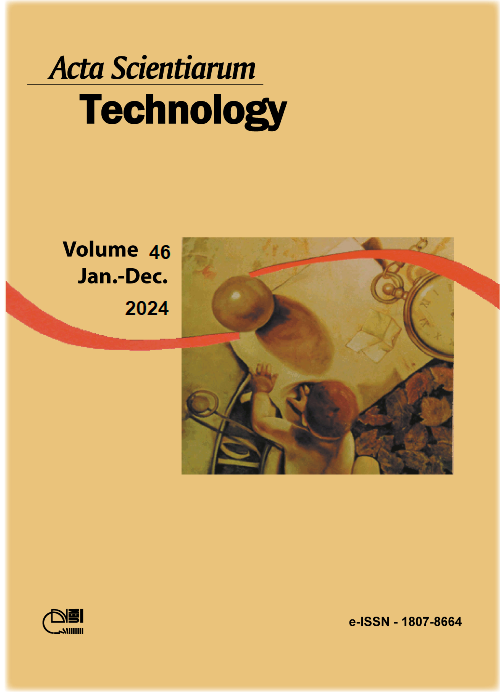Bone regeneration in critical size calvarial defects using synthetic hydroxyapatite and mineralized bovine tendon base materials: a micro-computed tomography analysis
DOI:
https://doi.org/10.4025/actascitechnol.v46i1.63001Palavras-chave:
biomaterials; bone graft; critical size defect; histological analysis.Resumo
This investigation used materials based on synthetic hydroxyapatite and mineralized bovine tendon as a framework for bone regeneration and evaluated the osteoconductivity of these materials in the calvaria of Wistar rats in comparison to Bio-Oss/Geistlich. Micro-computed tomography (µ-CT) analyses were performed non-invasively using three-dimensional image reconstruction to evaluate new bone formation; in addition, conventional histological analysis was used. The µ-CT results showed that Bio-Oss resulted in higher volume, density and bone percentage than the other materials. Based on the three-dimensional reconstructed images, the lowest resorption rates were observed in the Bio-Oss group, and the materials remained in larger quantities inside the defect at thirty days. In the synthetic hydroxyapatite group, intense resorption of the material and slight bone formation on the defect margins were noted, yielding an irregular edge. The mineralized bovine tendon group showed discrete new bone formation, and the material was fully resorbed. The Bio-Oss and synthetic hydroxyapatite groups yielded similar amounts of blood vessels and osteoblastic cells, and these were higher than the amounts found in the mineralized bovine tendon group. Synthetic hydroxyapatite was present within the defect and exhibited osteoconductive properties that were similar to the commercial brand, Bio-Oss. Mineralized bovine tendon did not exhibit good osteoconductivity and is contraindicated for maintaining bone space. Moreover, µ-CT yielded lower specificity; that is, µ-CT was not able to distinguish bone tissue from Bio-Oss, although it exhibited high sensitivity. Based on these results, it appears that synthetic hydroxyapatite has great potential for use in filling bone defects, unlike mineralized bovine tendon
Downloads
Downloads
Publicado
Como Citar
Edição
Seção
Licença
DECLARAÇíO DE ORIGINALIDADE E DIREITOS AUTORAIS
Declaro que o presente artigo é original, não tendo sido submetido í publicação em qualquer outro periódico nacional ou internacional, quer seja em parte ou em sua totalidade.
Os direitos autorais pertencem exclusivamente aos autores. Os direitos de licenciamento utilizados pelo periódico é a licença Creative Commons Attribution 4.0 (CC BY 4.0): são permitidos o compartilhamento (cópia e distribuição do material em qualqer meio ou formato) e adaptação (remix, transformação e criação de material a partir do conteúdo assim licenciado para quaisquer fins, inclusive comerciais.
Recomenda-se a leitura desse link para maiores informações sobre o tema: fornecimento de créditos e referências de forma correta, entre outros detalhes cruciais para uso adequado do material licenciado.



















